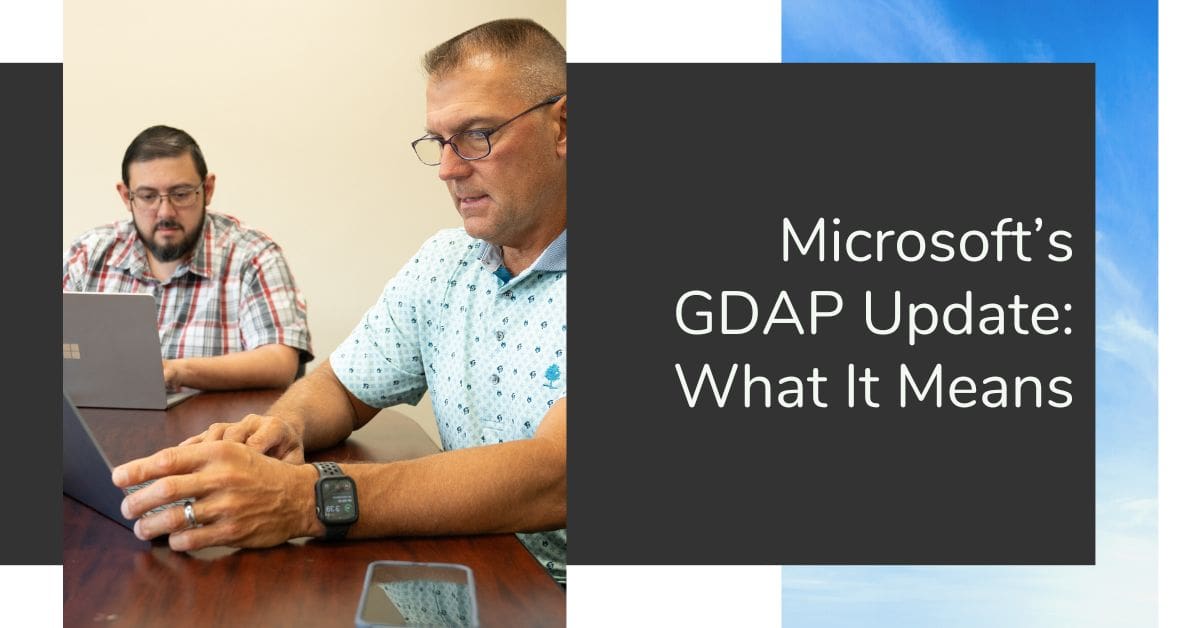Microsoft’s GDAP Update: What You Need to Know

As a Microsoft Tier 1 Cloud Solution Provider, we are thrilled to share a groundbreaking development that is set to redefine how we manage and access your Microsoft tenants. Microsoft, our trusted partner, has recently introduced a game-changing security feature, GDAP, or grandular delegated access permission, ushering in a new era of enhanced protection for your digital assets.
The Shift from DAP to GDAP: Enhancing Security
Beginning in November of this year, Microsoft initiated a significant shift in how partners, like SkyTerra, interact with and manage our customers’ Microsoft tenants. This transformation marks the retirement of the legacy delegated admin permission (DAP) model, a structure that granted partners “global administrator” access to customer environments at all times. While DAP served a purpose, it fell short of aligning with fundamental security practices such as just in time (JIT) and just enough access (JEA).
Enter granular delegated admin permission (GDAP), Microsoft’s answer to modernizing and fortifying access controls. GDAP, rooted in the zero-trust cybersecurity protocol, is designed to provide partners with least-privileged access.
This revolutionary feature empowers SkyTerra and other partners to configure precise, time-bound access to your workloads in both production and sandbox environments. What sets GDAP apart is that this least-privileged access is not automatic but explicitly granted by you, our valued customers.
Once granted, SkyTerra can partition and tailor access per customer, offering a level of security that aligns with your unique business needs.
The Power of Least-Privileged Access
We are genuinely excited about the implications of GDAP for our clients. This security enhancement enables us to serve you more efficiently while ensuring that security access is not just robust but also appropriately calibrated.
If you haven’t already connected with a member of our team to discuss GDAP and its implications for your organization, expect a call soon. We are committed to ensuring that this new security feature is seamlessly deployed across all our customers by the end of this year.
Why GDAP Matters
Let’s take a closer look at the features and benefits of GDAP.
- Least-privileged access and zero trust: GDAP operates on the principle of least-privileged access, aligning seamlessly with the zero-trust cybersecurity protocol. This ensures that partners like SkyTerra only have access to what is explicitly required, reducing the risk of unauthorized actions.
- Granular and time-bound access: GDAP allows partners to configure access with precision, limiting it to specific workloads and timeframes. This flexibility enhances security without compromising operational efficiency.
- Explicit customer grant: Access under GDAP is not automatic; it requires explicit permission from customers. This ensures that you have control over who accesses your data and under what conditions.
- Tailored security for your business: GDAP enables SkyTerra to provide a personalized security approach that aligns with your specific business requirements. It’s a step toward a more customized and effective security posture.
What to Expect From Our GDAP Solutions
SkyTerra is dedicated to keeping you informed and secure throughout this transition. We are actively working with our clients to discuss GDAP and its implications for your organization. Our team is committed to ensuring a seamless deployment of this new security feature across all our customers by the end of this year.
If you have questions or concerns about GDAP or Azure, or want to discuss how this security enhancement aligns with your unique business needs, please contact us or book a meeting with a member of our team.
We are here to guide you through this evolution in digital security and ensure that your organization continues to thrive in a secure digital environment.
